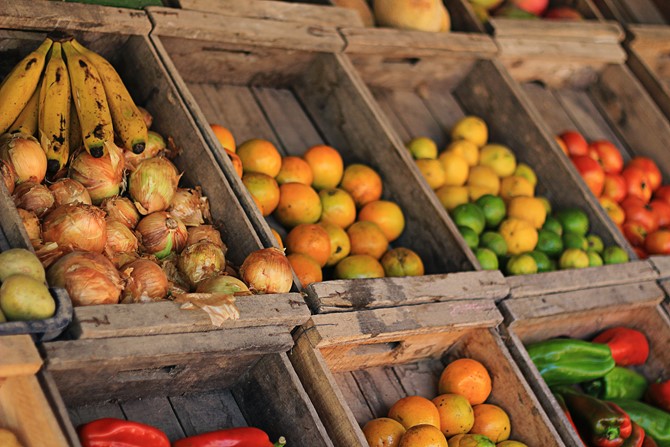Regional Innovation
- Economic Tools
-
Regional Innovation
- Ag Tech & Innovation
- Quilpie WellSpring: a circular economy concept for remote and arid regions
- Mutual ownership solutions for regional infrastructure innovation
- Creating a regional innovation ecosystem: the Goondiwindi case study
- Innovation PhD Project: Technology adoption in vegetable value chains
- Innovation PhD Project: Waste stream development in vegetable supply chains
- Farm Economic Diversification
- GTAG
-
Policy Development
- Policy development for regional Queensland
- QLD Rural & Regional workforce policy analysis
- Connectivity & inclusion in regional and rural communities
- Population policy for regional and rural Queensland
- Leveraging digital development in regional and rural Queensland: Policy Discussion Paper
- Social Dynamics in Rural Community
-
Value Chains
- Value Chain Analysis: three case studies
- Aquaculture supply & value chains
- Consumer Demand for Beef – Assessing credence factors for environment, health & animal welfare
- Evaluation of hybrid-cooperative model for horticulture: A case study of Tropical Pines
- Supply Chains of the Sheep and Goat Meat Industry
- Local Consumer Demands and Domestic Supply of Sheep and Goat Meat
- Translation & Engagement
- PhDs & Post Grads
- Future Drought Fund
Farm Economic Diversification
Project Report
Phil Currey, Ben Lyons and Fynn De Daunton, 2024. Family Farm Economic Diversification. Too Hard and Risky or an Opportunity Overlooked? The University of Southern Queensland. Toowoomba, Queensland.
Project Overview
Diversification offers farmers opportunities to create wealth by reducing risks and establishi ng multiple income streams. Diversification reduces risks associated with being over-reliant on a single commodity, product market, distribution channel or production method. Diversification provides the opportunity to create assets that may be sold at a future date. It can contribute to an increase in value received for farm production. It can create employment opportunities for farming family members and others in regional locations thereby contributing to a region’s prosperity and the wellbeing of regional communities. Despite these benefits, little research has been undertaken to understand the decision-making processes through which farmers proceed as they plan and implement diversification. This research will make a contribution to filling that gap.
ng multiple income streams. Diversification reduces risks associated with being over-reliant on a single commodity, product market, distribution channel or production method. Diversification provides the opportunity to create assets that may be sold at a future date. It can contribute to an increase in value received for farm production. It can create employment opportunities for farming family members and others in regional locations thereby contributing to a region’s prosperity and the wellbeing of regional communities. Despite these benefits, little research has been undertaken to understand the decision-making processes through which farmers proceed as they plan and implement diversification. This research will make a contribution to filling that gap.

Background
The OECD (2009) defines the risk in farming as uncertainties in the farmers’ actions and production decision resulting from the complexities of physical and economic systems. More specifically, agricultural risks are defined as: production risk (i.e. changing production conditions associated with changing weather conditions resulting in fluctuating yields), market risks (i.e. changing market conditions associated with changing prices or business cycles), and regulatory or institutional risk (i.e. changes in agricultural policies, food safety and environmental regulations). Furthermore, uncertainties are associated with adversity or loss which influences individuals negatively (OECD, 2009).
The economic behaviour of human beings when decreasing uncertainties is described as risk management (Kostov and Lingard, 2003). The OECD groups different types of risk management strategies into so called risk sharing, risk pooling and diversification strategies. Diversification reduces the risk of volatile farm returns by mitigating price risk and volatility in outputs, since it reduces reliance on only one market and exposure to its price fluctuations (Robison and Barry, 1987). Consequently, resulting from a risky market structure it could be argued that from a farm’s viewpoint the diversification decision is a risk management strategy.
Diversification is used by farmers to reduce weather/climate, production, market, regulatory, financial, human capital, environmental and other risks (Adnan et al., 2020). Despite the importance of diversification as a risk mitigation strategy, there is a lack of recent relevant research on the topic.
Diversification takes a number of forms, including:
|
Term |
Definition / Comments |
|
Agricultural diversification |
a farm business is considered involved in agricultural diversification if it obtains income from two or more agricultural enterprises, such as grain and milk. For completeness, specialized farm businesses are defined as farms obtaining their agricultural income from only one agricultural enterprise. The definitions of diversification outlined here implies that farm businesses obtaining income from on-farm processing of their own raw material would be considered diversified even though their production may be specialized in a single agricultural enterprise to provide new products to new markets (Barnes et al., 2015). |
|
Climate-smart agriculture (CSA) |
agriculture that sustainably increases productivity, resilience (adaptation), reduces/removes GHGs (mitigation), and enhances achievement of national food security and development goals (FAO) (Mizik, 2021) |
|
Farm diversification |
a farm business uses its agricultural resources, such as land holdings, buildings, machinery and labour, to produce income from activities that are not defined as conventional farming, or to process its raw material on-farm, often in order to pursue a marketing strategy based on value-added products (Barnes et al., 2015). |
|
Non-agricultural diversification |
includes enterprises such as farm-based accommodation and recreation, on-farm processing and or direct marketing of food and fibre (Black, Campbell, & White, 2002) |
|
Passive diversification |
passive diversification where land and/or buildings are leased for non-agricultural purposes (Black et al., 2002). |
|
Pluriactivity |
where farm families adopt both on and off-farm enterprises. Off-farm sources of diversification may be overlooked in some studies of the benefits of diversification. |
|
Value-adding |
a form of non-agricultural diversification, where the farmer takes control of processing and or marketing of their primary product in order to capture the value that is added as the product moves along the production chain towards the final marketed product (Farm Table, 2018) |
This research will contribute to the literature on Farm and Regional Economic Diversification. This is a topic that has become increasingly relevant to Australian agriculture by the impact of Covid and changing weather patterns, all of which have a negative impact of farm and regional resilience and capacity to respond to adverse external factors. By undertaking this research, UniSQ/RECoE will become well positioned to provide advice to farmers, government agencies, politicians and other stakeholders on the topic of Regional Economic Diversification as RECoE will have current and regionally-based evidence of the issues and benefits experienced by farmers.
Research Team
Lead Investigator - Dr Phil Currey
Co-Investigator – Fynn De Daunton
Co-Investigator – Associate Professor Ben Lyons
Methodology
The research will learn from the lived experiences of farmers who have diversified and observers of farm diversification. The findings, published in a generalised non-identifiable form, will be available to other farmers to use as so they can make evidence-based diversification decisions. It will also contribute to the evidence available to advisors to farmers, and to government policy makers.
Semi-structured interviews will be conducted with observers of diversification and primary producers. Interviews will be conducted by one of the three investigators. The research has been approved by University of Queensland’s Ethics Committee ETH2023-0482.

(Laskoski, 2018)
Aims
Even though diversification has been and is employed by many farming enterprises there is very little research that provides information on the decision making process used by farmers to plan and implement their diversification decisions or about the impact (positive or negative) of diversification on regional economies. This research will contribute to these gaps. The research is justified because the A$5 billion Future Drought Fund is aimed at facilitating resilience in farmers and farms, diversification is an important component of farm resilience but there is little recent Australian research evidence on the topic of farm diversification to inform the use of funds for diversification activities. This research will be guided by the following research questions:
RQ1: What diversification strategies have succeeded internationally (including within Australia) and how have farmers in those situations been supported to achieve their success?
RQ2: What are the good and bad experiences of Australian farmers who have successfully or unsuccessfully implemented diversification as a strategy, including the motivation for considering diversification in the first place and subsequent challenges, risks, financial and other benefits and rewards as experienced by them.
RQ3: What benefits flow into regional economies from farm diversification?
RQ4: How best can diversification be communicated to farmers, their advisors and government (local, state and federal) so farmers can properly consider, and be supported, when considering diversification as part of comprehensive economic risk mitigation and resilience-building strategies?
RQ5: How can government best support farmers seeking to diversify?
RQ6: What conclusions and recommendations can be made, based on this research, to guide government policy?
By answering these questions the research will provide a contemporary understanding of diversification in Australia and provide insights into how to promote and support the use of diversification as a strategy to contribute to drought resilience. It will make practical recommendations for farmers considering diversification, enable support for farmers and provide relevant input for government policy.
Reference List
- Adnan, K., Ying, L., Ayoub, Z., Sarker, S. A., Menhas, R., Chen, F., & Yu, M. M. (2020). Risk management strategies to cope catastrophic risks in agriculture: The case of contract farming, diversification and precautionary savings. Agriculture, 10(8), 351.
- Barnes, A. P., Hansson, H., Manevska-Tasevska, G., Shrestha, S. S., & Thomson, S. G. (2015). The influence of diversification on long-term viability of the agricultural sector. Land use policy, 49, 404-412.
- Black, A., Campbell, C., & White, G. (2002). Costs and benefits of diversification: Whole farm case studies. ACT, RIRDC.
- Farm Table. (2018). Advantages, disadvantages and major pitfalls of farm diversification. https://farmtable.com.au/part-2-advantages-disadvantages-and-major-pitfalls-of-farm-diversification/
- Kostov, P & Lingard, J. (2003). Risk management: a general framework for rural development. Journal of Rural Studies, 19(4), 463-476.
- Mizik, T. (2021). Climate-smart agriculture on small-scale farms: A systematic literature review. Agronomy, 11(6), 1096.
- Robison, L.J. and Barry, P.J. (1987) The Competitive Firm’s Response to Risk. Macmillan Publishing Co., New York.

